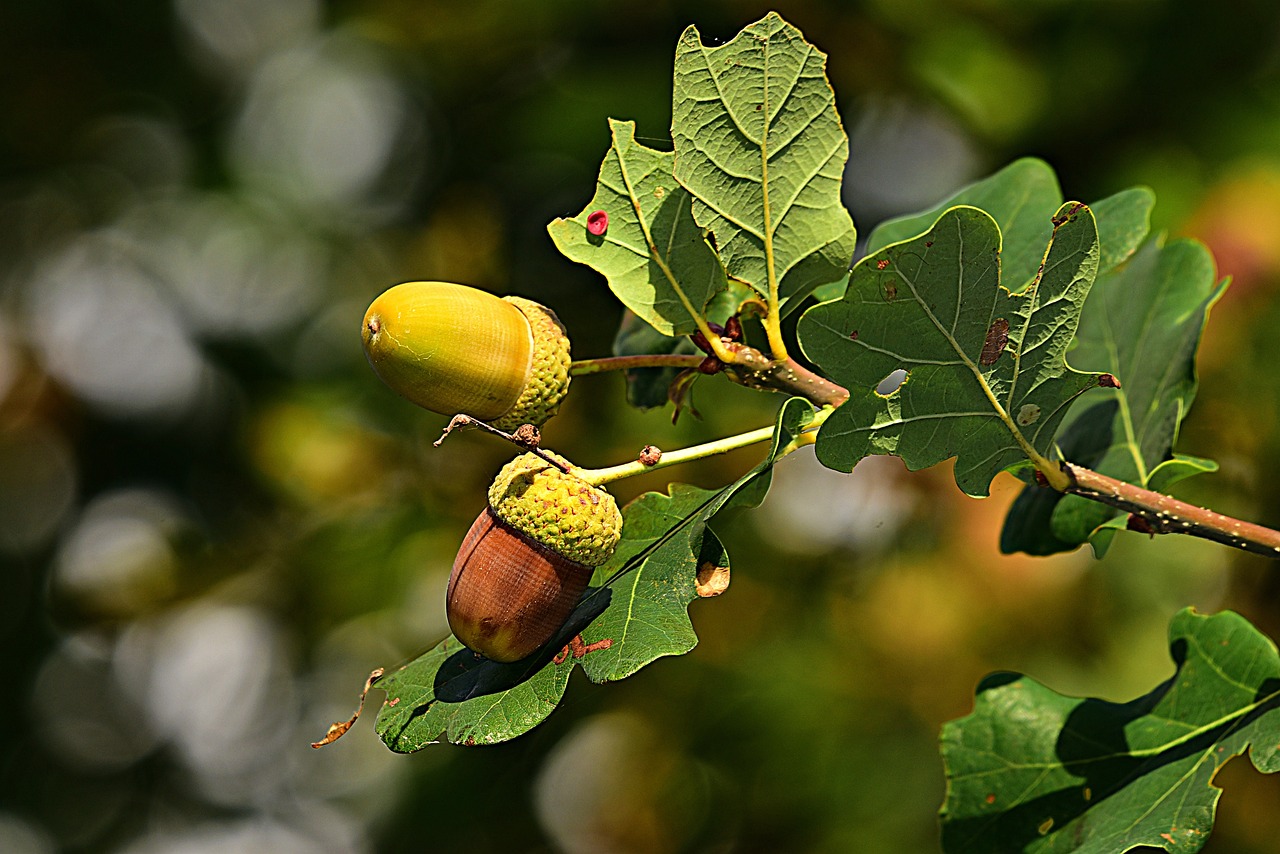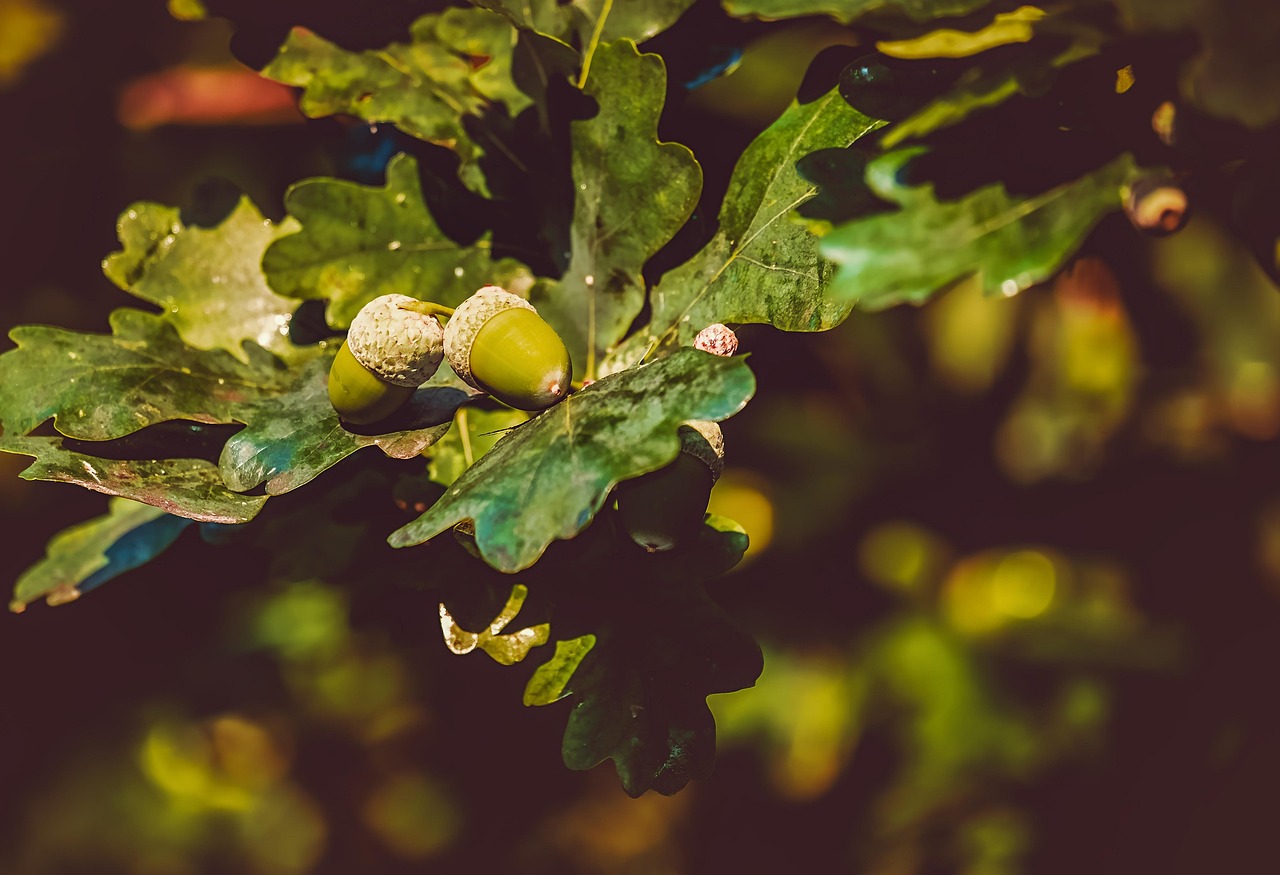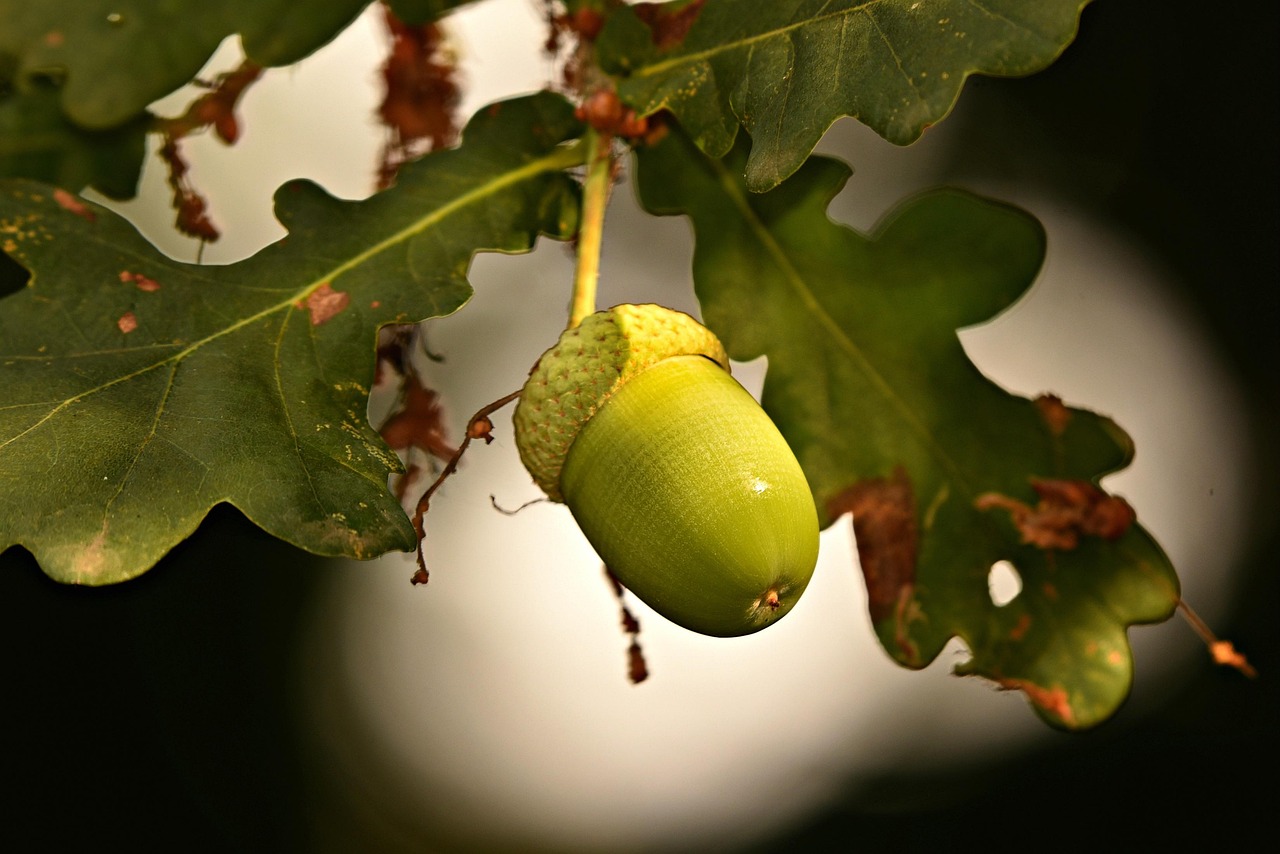California is renowned for its diverse landscapes and rich natural heritage. Among its most iconic features are the majestic oak trees that grace the state’s hillsides, parks, and urban areas. With their sturdy trunks, sprawling canopies, and distinctive leaves, these trees have become symbols of strength and endurance in the Golden State.
California is home to a remarkable variety of oak species, each contributing to the state’s unique ecosystems. Oaks provide numerous benefits, including habitat for wildlife, shade for humans, and an aesthetic charm that enhances the natural beauty of the landscape. Understanding how to identify these mighty oaks can deepen one’s appreciation for California’s natural environment.

In this article, we will explore the different types of oak trees in California, their characteristics, and how to identify them. We will highlight some fascinating facts about these trees, showcasing their significance in both ecology and culture. Whether you are a nature enthusiast or simply curious about the flora around you, learning about California’s oak trees can be an enriching experience.
Types of Oak Trees in California
California boasts several species of oak trees, each adapted to various environments across the state. Below is a list of some of the most common oak species found in California:
- Coast Live Oak (Quercus agrifolia)
- Valley Oak (Quercus lobata)
- Blue Oak (Quercus douglasii)
- Black Oak (Quercus kelloggii)
- Interior Live Oak (Quercus wislizeni)
- Shreve Oak (Quercus parvula)
Each species has distinct traits that make them unique. For example, the Coast Live Oak is evergreen, maintaining its leaves year-round, while the Valley Oak is known for its impressive size and deciduous nature, dropping leaves in the fall.
Key Characteristics of California Oaks
Identifying oak trees can be straightforward if you know what to look for. Here are some of the key characteristics to observe:
| Oak Species | Leaf Shape | Growth Habit | Height |
|---|---|---|---|
| Coast Live Oak | Spiny, glossy leaves | Wide canopy | 20-60 feet |
| Valley Oak | Lobed leaves with deep sinuses | Tall and broad | 40-80 feet |
| Blue Oak | Blue-green leaves with lobes | Open canopy | 30-60 feet |
| Black Oak | Lobed leaves with sharp points | Pyramidal shape | 50-100 feet |
| Interior Live Oak | Smooth, leathery leaves | Dense canopy | 20-50 feet |
| Shreve Oak | Small lobed leaves | Round crown | 20-40 feet |
The variations in leaf shape and growth habit are significant indicators when trying to identify different oak species. Additionally, oaks play a crucial role in their ecosystems as they support a wide range of wildlife, including birds, insects, and mammals.
As you venture through California’s landscapes, take a moment to observe these majestic trees. Their beauty and resilience offer a glimpse into the rich ecological tapestry that defines this remarkable state.
Ecological Importance of California Oaks
California oak trees are not only beautiful but also vital to the ecosystems they inhabit. They provide essential resources and services that support a wide array of wildlife and contribute to environmental health. Understanding the ecological importance of these trees can inspire greater appreciation and conservation efforts.
Wildlife Habitat
Oaks serve as critical habitats for numerous species. The complex structure of oak trees provides shelter, nesting sites, and food for various animals. Here are some key species that rely on California oaks:
- Birds: Many birds, such as the Western Bluebird and Oak Titmouse, depend on oaks for nesting and foraging.
- Mammals: Species like deer, squirrels, and raccoons are frequent visitors to oak woodlands, where they find food and shelter.
- Insects: Oaks support a variety of insects, including beetles and caterpillars, which play important roles in the food web.
The presence of oak trees significantly enhances biodiversity within their ecosystems. They provide a rich array of resources that sustain many organisms, making them essential components of California’s natural heritage.
Soil Health and Erosion Control
The roots of oak trees help stabilize the soil, preventing erosion and maintaining soil quality. This is particularly important in California, where heavy rains can lead to significant soil loss. The deep root systems of oaks allow them to access nutrients and water, promoting healthy soil structures. Additionally, fallen leaves from oaks decompose and enrich the soil with organic matter, enhancing its fertility.
Carbon Sequestration
As large trees, oaks sequester significant amounts of carbon dioxide from the atmosphere. This process helps mitigate climate change by reducing greenhouse gas levels. The longevity and size of oak trees mean they can store carbon for decades, making them important allies in efforts to combat climate change.
Cultural Significance of Oaks

The cultural importance of oak trees extends far beyond their ecological contributions. Throughout history, oaks have held symbolic meanings in various cultures and communities. In California, they are often associated with strength, endurance, and resilience.
Historical Uses
Native American tribes have long recognized the value of oak trees. They utilized acorns as a staple food source, using various methods to process them for consumption. The wood from oak trees was also used for tools, shelter, and crafts, showcasing the tree’s versatility.
Modern Appreciation
In contemporary culture, oak trees continue to be celebrated for their beauty and grandeur. Many parks and public spaces feature oaks as focal points for recreation and relaxation. Community events often highlight the importance of oaks in local history and ecology.
Threats to Oak Trees

Despite their resilience, California oak trees face several threats that jeopardize their survival. It is crucial to be aware of these challenges to promote effective conservation strategies.

- Urban Development: Expanding cities encroach on oak habitats, leading to habitat loss and fragmentation.
- Pests and Diseases: Invasive species, such as the goldspotted oak borer, pose significant risks to oak populations.
- Climate Change: Changes in temperature and precipitation patterns can affect oak growth and health.
Addressing these threats requires collective action from individuals, communities, and policymakers to ensure the protection and preservation of California’s majestic oak trees for future generations.
Conservation Efforts for California Oaks
To combat the threats facing California oak trees, various conservation efforts are underway. These initiatives aim to protect oak habitats, restore damaged ecosystems, and engage the community in preservation activities. Understanding these efforts is essential for nurturing a sustainable environment for future generations.
Protected Areas and Reserves
Establishing protected areas is a crucial step in conserving oak trees and their ecosystems. National parks, state parks, and nature reserves play a significant role in safeguarding oak habitats. Some notable areas include:
- Point Reyes National Seashore: Home to diverse ecosystems, including coastal oak woodlands.
- Henry W. Coe State Park: Features extensive oak forests and offers educational programs about local flora.
- Los Padres National Forest: Contains numerous oak species and is crucial for wildlife habitat preservation.
These protected areas not only conserve oak trees but also provide opportunities for research, recreation, and environmental education.
Community Involvement and Education
Engaging local communities in conservation efforts is vital for the success of oak preservation initiatives. Educational programs and volunteer opportunities help raise awareness about the importance of oaks. Some ways communities can get involved include:
- Workshops: Hosting events that educate the public about oak ecology, identification, and management practices.
- Tree Planting Events: Organizing community tree planting days to restore native oak populations.
- Citizen Science Projects: Encouraging residents to participate in monitoring local oak health and reporting sightings of pests or diseases.
These activities foster a sense of stewardship among community members, empowering them to take an active role in preserving their natural surroundings.
Best Practices for Oak Tree Care
Caring for oak trees is essential for their health and longevity. Proper maintenance can prevent many issues that threaten these magnificent trees. Here are some best practices for oak tree care:
Watering and Mulching
Newly planted oaks require consistent watering to establish strong root systems. It is important to:
- Water deeply but infrequently, allowing the soil to dry out between sessions.
- Apply organic mulch around the base of the tree to retain moisture and suppress weeds.
Pest Management
Monitoring oak trees for signs of pests or diseases is crucial. Here are effective strategies:
- Regular Inspections: Check for symptoms such as leaf discoloration, premature leaf drop, or unusual growth patterns.
- Natural Predators: Encourage beneficial insects that prey on harmful pests.
- Avoid Chemical Pesticides: Use organic methods whenever possible to minimize harm to beneficial species.
Pruning Techniques
Pruning is an important aspect of maintaining healthy oak trees. Proper pruning can enhance their structure and encourage growth. Key considerations include:
- Prune during the dormant season (late fall to early spring) to minimize stress on the tree.
- Avoid excessive pruning; remove only dead, damaged, or crossing branches.
By following these best practices, individuals can contribute to the health and resilience of California’s oak trees, ensuring they thrive for years to come.
Challenges in Oak Conservation
Although there are numerous efforts to conserve California oak trees, significant challenges remain. Understanding these challenges is essential for developing effective strategies to protect these vital resources.
Climate Change Impacts
Climate change poses a multifaceted threat to oak trees. Rising temperatures and altered precipitation patterns can affect oak health and distribution. Some specific impacts include:
- Drought Stress: Increased temperatures lead to longer dry spells, putting stress on oak trees and making them more susceptible to diseases and pests.
- Altered Growth Patterns: Changes in seasonal weather can disrupt the natural growth cycles of oaks, affecting their reproductive success.
- Invasive Species: Climate change may facilitate the spread of invasive species that compete with or harm native oaks.
Public Awareness and Education
Another challenge in oak conservation is the general public’s awareness of the importance of these trees. Many people may not recognize the ecological and cultural significance of oaks. Increasing awareness can be achieved through:
- Educational Campaigns: Initiatives that highlight the benefits of oaks can engage the public and inspire action.
- School Programs: Incorporating tree education into school curricula can foster a sense of responsibility among young generations.
- Community Events: Organizing events such as tree walks, talks, and festivals centered around oaks can enhance community involvement.
Final Thoughts
California oak trees are remarkable organisms that play a crucial role in the state’s ecosystems. Their beauty, strength, and ecological significance make them worthy of protection and appreciation. By understanding the various species of oaks, their ecological roles, and the challenges they face, individuals and communities can actively participate in their conservation.
The importance of oak trees spans not just environmental dimensions but also cultural and historical aspects. They have shaped landscapes, provided resources for indigenous peoples, and continue to connect communities with their natural heritage. Through continued efforts in education, conservation, and community engagement, we can ensure that California’s mighty oaks thrive for generations to come.
As we look to the future, it is imperative to foster a culture of stewardship toward our natural resources. Every individual can make a difference by advocating for sustainable practices, participating in local conservation efforts, and spreading awareness about the importance of preserving these majestic trees. Together, we can work towards a healthier environment that honors the legacy of California’s oak trees.
